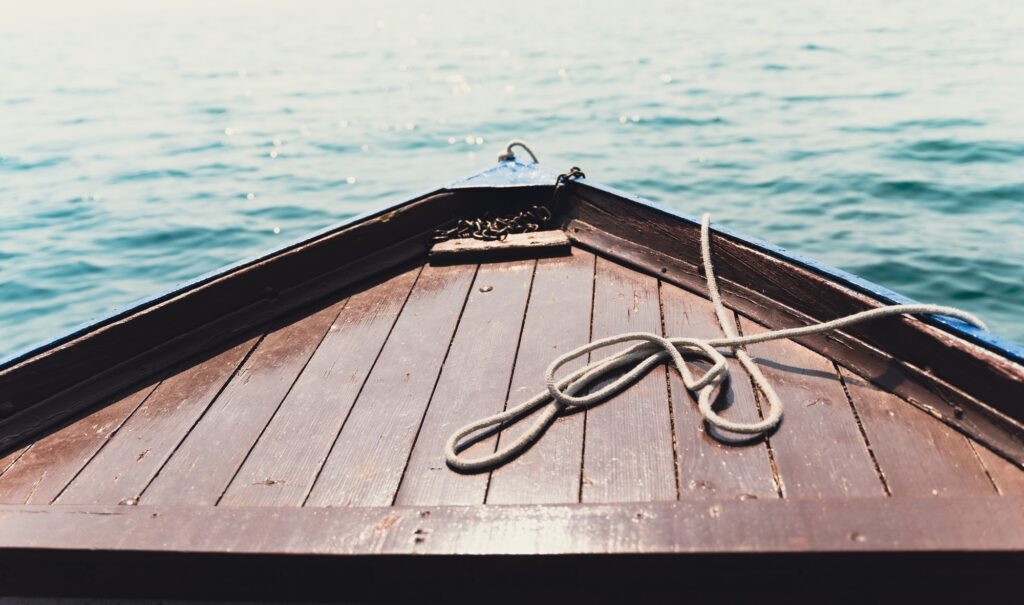
Anchoring your houseboat for the first time can be an exciting, but also nerve-wracking experience. Whether you are anchoring for the first time or are an experienced houseboat owner, here are some tips to help you get the most out of your first anchoring experience.
The simple answer is to ensure the houseboat is correctly positioned, and that there is sufficient clearance from any other vessels. Use a depth finder to calculate the amount of rode (line and chain) needed, then slowly drop your anchor and ensure it is properly set and secured to the bow cleat.
If you’re anchoring your houseboat for the first time, you need to know how to anchor it and anchor it properly and safely.
There are many things that can go wrong when dealing with houseboats. If you have used a houseboat before, you know that there is a fine line between safe and unsafe.
If the houseboat isn’t properly anchored, it can get swaying. And moving around can cause damage to the houseboat itself, as well as to other boats and structures nearby.
This article will help you understand the process of anchoring a houseboat in a safe way. It will also help you avoid problems that can arise from improper anchoring.
Table of Contents
How to Prevent Improper Anchoring?
Do you want to avoid problems with anchoring? Of course, you do. We all do. But the truth is that there is no one solution to all problems.
While there are some fairly common issues in the industry, we will also focus on some of the more unusual and less common issues that we may come across when using different methods of anchoring a houseboat.
Anchoring a houseboat is a difficult task. It requires a lot of knowledge and skill to do it right. But even the most experienced of houseboat owners have a problem or two that they’ve run into.
If you are going to anchor a houseboat for the first time, you need to understand what you are doing, and how you can avoid the most common problems.
When you are anchoring a houseboat, there are several different methods that you can use. The method that you choose will depend on your experience, the size of your houseboat, the bottom type, and the types of anchors.
If you are going to anchor a houseboat, you need to be aware of some common mistakes that you may make. Here are some of the more common ones:
- Miscalculated Anchor Scope
Miscalculating the ratio between the length of your rodes and the distance from the bow cleats to the water depth is a critical factor in anchoring a houseboat in position securely.
You should also take into account the wind and water current, you need to have more rode in rougher weather.
- Incorrect Anchor
This is a common problem that can occur when you are anchoring a houseboat for the first time.
You should use an anchor that is appropriate, consider the bottom type and material it is to be used on.
- Anchoring Too Close To Other Boats
Anchoring too close to others is a common problem. A rule of thumb is to make sure you have a 360-degree swinging room once your rode is extended out.
This is to avoid coming into contact with another houseboat; this may result in minor structural damage
Step-by-Step Guide to Anchor a Houseboat
Now that we’ve discussed some of the things that you can do to prevent improper anchoring, it’s time to get into the nitty-gritty of anchoring.
The way you anchor your houseboat will depend on various factors, including the water level, current weather conditions, safe anchoring and anchoring etiquette.
Step 1: Make Sure the Boat is Properly Prepared
It’s important to make sure the boat is well-prepared before you even start working on it. Do you have the correct anchor? Did you bring an additional anchor for another type of bottom type? Are they any underwater hazards near your anchoring location?
Make sure your chain and nylon rope are in good condition, you wouldn’t want them to snap while anchoring.
Step 2: Choose a Suitable Location and Correct Position
As a beginner, I highly recommend that you find a location with plenty of room to practice like an open lake before proceeding to high-traffic areas to avoid any accidents. Position your vessel’s bow to face the direction of waves.
Step 3: Determine the Type of Anchor You Will Use
If you’re going to use an anchor, determine what kind of anchor you want to use. You’ll need to know the size, weight, and shape of the anchor you want to use.
To determine which is the right anchor you have to know the bottom type you are dealing with.
Anchors are built to handle a certain bottom type. For example, if it’s sand the anchor I recommend is the fluke anchor. But for rock or coral bottoms, a claw anchor will be ideal. If you are still unsure of which anchor type to use, don’t worry. We’ve covered it in this post here.
Step 4: Calculate Required Anchor Scope
Using a depth finder can help with your rode length. The easiest way to calculate the amount of rode required. A 1:7 to 1:10 ratio of anchor scope to water depth will be a good gauge. In simpler terms, for every 1-foot depth, you need to have 7-10 feet of anchor line. So, it is best to prep excess anchor line.
It is good to have at least 10′ to 15′ chain length so that it gives the anchor an ideal angle for easier setting. The risk of using a full-length rope might cause the rope to cut loose on a rocky seabed and cause loss of anchor.
You should also take into account the wind and water current, you need to have more rode in rougher weather.
Step 5: Anchor the Boat
Secure the end of the anchor line to a bow cleat, Then slowly release the anchor, allow some time for the anchor to reach the bottom and ensure to keep the rode tight to avoid any tangle of the anchor. You need to ensure the rode is in tension to the anchor to prevent the anchor from dragging. Allow the boat to ride back slowly with the waves or low speed reverse to snub the anchor firmly.
If you are still in motion, the anchor is very likely to be dragging. Otherwise, congratulations, you have successfully anchored.
Just be aware that it is securely anchored by using electronics to mark your coordinates. If you do not have one, you can simply mark your sight on 2 stationery landmarks to make sure there is no anchor drag.
Step 6: Secure Your Anchor
The rode should be tight to the anchor and should follow the anchor straight down to the bottom. Maintain a slow idle speed for additional resistance if needed.
If the tightness is not at the desired resistance and follows the anchor in an arc, then you need to readjust the rode. It is okay to readjust countless times to ensure that the anchor is set. Surely you would rather readjust than drift far away from your desired location!

Basic Anchoring Etiquette
It is a good idea that anchoring etiquette should be followed while anchoring your houseboat.
Here are some basic rules of anchoring etiquette:
1. Be aware of other boats’ swing radius.
2. Check with the boats beside you on the amount of scope they are using to prevent both of the boats from colliding.
3. DO NOT drop your anchor beside your neighbor’s boat, you should drop your hook behind the stern of their boat.
5. Anchor your boat so that you have a 360-degree swinging room once your rode is extended out.
6. If you have any doubts about your anchor, then use a backup anchor.
7. Ask for help if unsure, you should always ask for help if you have any doubts. Boaters are always willing to help you. At the end of the day, no one wants to destroy a beautiful weekend vacation!
Final Note
On the whole, you just need to follow the steps above and have a good understanding of your anchor’s performance. You should be able to anchor your houseboat without a problem. If the waves and wind change direction, check your houseboat’s position relative to the landmarks you have set to see if the anchor has come loose. If need be, take some time to reset the anchor if it doesn’t reset itself.
Do not rush it and allow yourself ample time. Once you get the hang of anchoring, you can take it to the next level by doing some more advanced anchoring tricks like anchoring your houseboat to an object like a dock, a piling, or a rock.
If you like this article, please share it with your friends and family.

